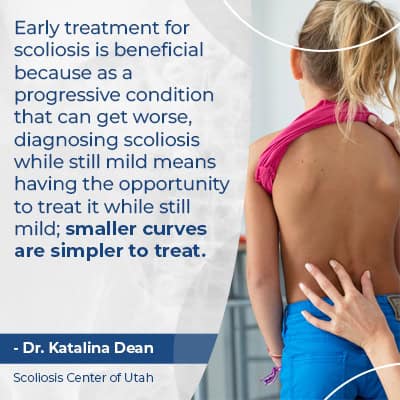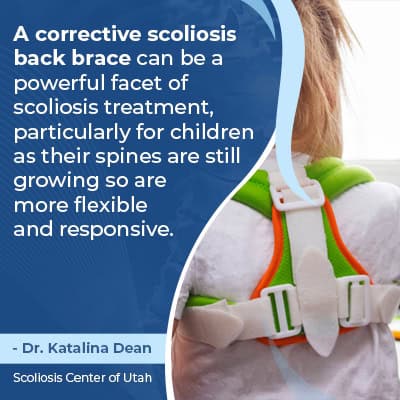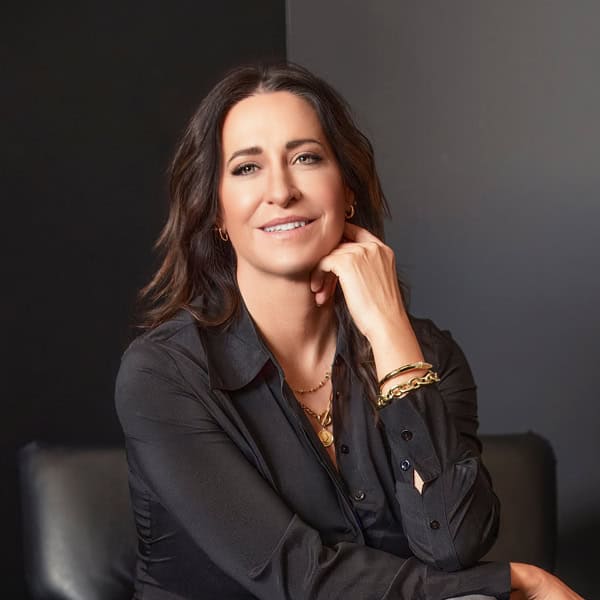Blogs
Scoliosis: When to Treat and Key Factors to Consider

All types of scoliosis can benefit from treatment. As an ongoing condition, treatment has to consider long-term spinal health. While treatment results can never be guaranteed, an early diagnosis can lead to early intervention with corrective scoliosis bracing, Chiropractic BioPhysics®, and the ScoliBalance® program.
What’s most important to know about scoliosis is the sooner treatment is started, the better. As a progressive spinal condition that can get worse with growth, it can become more severe as a child grows. Key factors include patient age and condition severity.
Scoliosis causes the spine to bend and twist unnaturally, but no two cases are the same.
Early Treatment is Beneficial
I can never guarantee treatment results, but treatment success is related to early detection and intervention.
Part of the reason an individualized approach is necessary in scoliosis treatment is because conditions are shaped by a number of factors that can vary from patient to patient.
Many variables shape a patient’s treatment needs, and when it comes to early detection and intervention, patient age and condition severity are key factors to consider.
 Early treatment for scoliosis is beneficial because as a progressive condition that can get worse, diagnosing scoliosis while still mild means having the opportunity to treat it while still mild; smaller curves are simpler to treat.
Early treatment for scoliosis is beneficial because as a progressive condition that can get worse, diagnosing scoliosis while still mild means having the opportunity to treat it while still mild; smaller curves are simpler to treat.
Patient Age
Scoliosis affects all ages from congenital scoliosis to infantile scoliosis, juvenile scoliosis, adolescent scoliosis, and adult scoliosis involving patients who have reached skeletal maturity.
Early detection isn’t always easy to achieve in children, but they have the most to gain from it; as scoliosis progression is caused by growth, patients who are still growing are the most at risk for continued and rapid progression.
Starting treatment early, particularly before a young patient’s first pubescent growth spurt, can mean mild scoliosis isn’t given the chance to become moderate and/or severe scoliosis, and this can mean sparing patients the hardships associated with increasing condition effects.
The main effects in children involve postural changes such as uneven shoulders, shoulder blades, hips, and a rib cage arch; balance, coordination, gait, and mobility can also be affected.
In adults, the main effect is pain caused by compression.
Starting treatment early in the condition’s most common type, adolescent idiopathic scoliosis, can help counteract the rapid progression that adolescent scoliosis patients can face due to puberty.
Patient age is a key factor because how much growth a patient has remaining, prior to reaching skeletal maturity, indicates the level and rate of potential progression.
Adult Scoliosis
So for adult patients, I know rapid progression isn’t as much of a risk as degenerative changes within the spine, so treatment plans are shaped accordingly.
Skeletal maturity also plays a role in scoliosis pain as the condition becomes compressive once growth has stopped, so most adults with scoliosis are diagnosed because of pain; degenerative scoliosis affects older adults and can be particularly painful.
So patient age is a key factor in terms of predicting a patient’s potential progressive rate, along with whether or not pain relief will be a focus of treatment.
Another key factor is condition severity.
Condition Severity
Scoliosis can range from mild scoliosis to moderate and severe scoliosis, and this is determined by the size of the unnatural spinal curve and its angle of rotation (ATR).
The more severe scoliosis is, the more noticeable its effects are likely to be.
Although a spinal condition, scoliosis doesn’t just affect the spine; it’s associated with postural and mobility issues, pain, fatigue, self-esteem issues and more.
Correcting scoliosis means restoring balance to the spine and body, and the more severe a condition is when treatment is started, the more complex it can be to treat.
As scoliosis gets worse, the spine is becoming more rigid, less flexible, and less responsive to treatment.
Scoliosis X-rays tell me a lot about a patient’s condition, including whether I’m dealing with mild, moderate, or severe scoliosis, and this type of information is a key factor when customizing treatment plans accordingly.
Addressing scoliosis doesn’t have to involve surgical treatment, especially when it’s started early.
The Power of Scoliosis Bracing and Posture Correction
 A corrective scoliosis back brace can be a powerful facet of scoliosis treatment, particularly for children as their spines are still growing so are more flexible and responsive.
A corrective scoliosis back brace can be a powerful facet of scoliosis treatment, particularly for children as their spines are still growing so are more flexible and responsive.
Again, the milder a patient’s scoliosis is at the time bracing is applied, the more potential there is for treatment success.
A corrective bracing system like the ScoliBrace® can successfully help reduce and reverse unnatural spinal curves in infants, juveniles, and adolescents.
In adults, the ScoliBrace® is used to slow or stop progression, reduce pain, and improve the spine/ body’s balance and symmetry: particularly beneficial for older adults as improving balance can help with fall-prevention.
The ultra-corrective ScoliBrace® helps to push the body into a posture that supports a straighter spinal alignment, and when combined with the power of Chiropractic BioPhysics®, capable of actually realigning the spine, impressive improvements can be made.
To ensure each brace is as bespoke to an individual patient’s body and condition type as possible, a series of 3-dimensional scans and digital X-rays are conducted.
The ScoliBrace® is innovative in its complete customization, and as a 3-dimensional spinal condition, the ScoliBrace® can offer a 3-dimensional solution, particularly when applied early and combined with the power of CBP.
The Power of Chiropractic BioPhysics® and Realigning the Spine
Chiropractic BioPhysics® is a comprehensive chiropractic modality that combines the power of anatomy, biology, physiology, geometry and physics to diagnosing and treating issues related to spinal health (pain, discomfort, mobility issues, neurological symptoms).
CBP represents the union of science and chiropractic care. As diagnosis and treatment are based on proven scientific principles, CBP can identify the underlying cause of a number of issues so they can be addressed accordingly for long-term results.
As scoliosis develops and progresses, the spine is shifting further out of alignment and becoming increasingly unbalanced, and this type of disruption doesn’t just affect the spine and its immediate surroundings, but the entire body.
The Center’s chiropractic team is certified in the use of mirror image exercises that promote postural awareness and remodeling, and when combined with the power of ScoliBalance®, there are fewer limits to what the ScoliBrace® and CBP can achieve.
The Power of ScoliBalance® Corrective Exercises
Scoliosis is complex. As a 3-dimensional condition, the structural issues are evident not just in the spine’s unnatural bend, but also in its rotation.
ScoliBalance® therapy is applied by the Center’s chiropractors, therapists, and physical therapists to help improve the spine’s balance, flexibility, posture, reduce curve size, and to improve the spine’s surrounding muscle strength and balance.
Structural changes achieved through CBP can be stabilized and supported by strong back and additional muscles.
Part of the ScoliBalance® approach is to custom-design a scoliosis-specific exercise program that’s based on a patient’s curve type, location, experienced functional deficits, and postural issues.
Patients are taught 3-dimensional postural correction exercises as postural awareness and specific individualized corrective exercises help sustain long-term corrective treatment results.
What Can Happen if Scoliosis is Left Untreated?
As a progressive condition, most cases will become more severe over time, and in atypical cases, or cases that have become severe and very severe, potential complications can include nerve damage, breathing problems, cardiac and digestive issues.
Scoliosis that’s left untreated is also more likely to require future surgical intervention; invasive spinal fusion surgery fuses two or more vertebrae into one solid bone and attaches metal rods to keep the spine straight, but this can require an extensive recovery time and is known to make the spine weaker and less flexible.
Scoliosis left untreated in older adults can lead to serious injury from falls related to the spine and body becoming increasingly unbalanced and unstable.
Conclusion
While there are a number of factors that shape a patient’s experience of life with scoliosis, patient age and condition severity are key; they help treatment providers predict a young patient’s likely rate of progression based on the stage of growth they are in, and condition severity dictates the type of treatment options needed and how they should be apportioned.
Here at the Scoliosis Center of Utah, my patient-centered approach is about improving overall health for a better quality of life, and this means not just focusing solely on the spine, but also the effects and changes a misaligned spine can cause throughout the body.
Nature favors symmetry, and as an asymmetrical condition, scoliosis introduces uneven forces to the body in a number of ways, so we use a number of treatment modalities to address scoliosis and restore the body’s balance and symmetry: the ScoliBrace® solution, Chiropractic BioPhysics®, and the ScoliBalance® program.
What I really want patients to understand is that not all cases of scoliosis require scoliosis surgery and the sooner treatment is applied, the better; the milder conditions are when treatment is started, the more responsive they are likely to be.
With scoliosis diagnosed early and treated proactively, curve progression can be counteracted, and complementary treatment modalities can help keep the spine straight, balanced, and aligned for true corrective results that can be sustained.
So the take-away for scoliosis patients is to get treatment and get treatment now!

Dr. Katalina Dean
Dr. Katalina Dean is the founder and clinical director of Scoliosis Center of Utah, in Midvale, UT. Her team specializes in posture correction, spinal rehabilitation, and non-invasive scoliosis care and bracing.
Call Today
Do You Qualify for Care?
Schedule an Appointment Below
